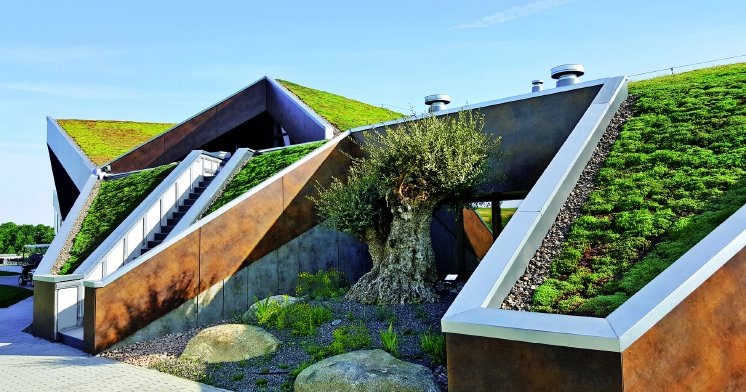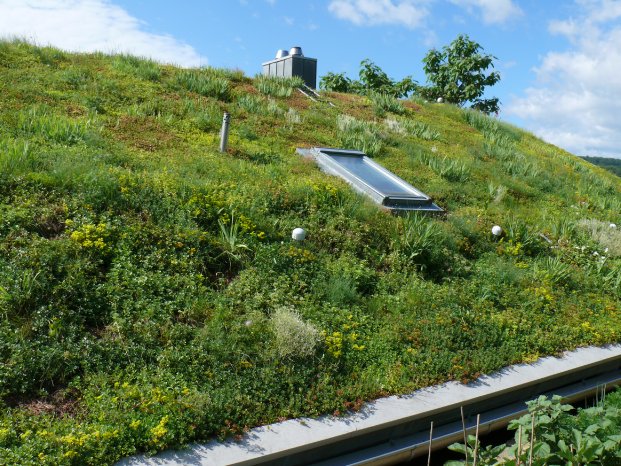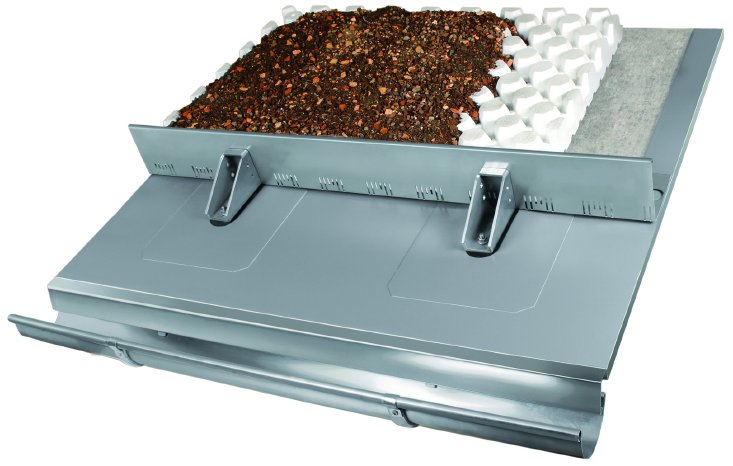In addition to a system build-up that is suitable for the building, together with an appropriate drainage element, the correct choice of substrate and plants, for example, pre-cultivated vegetation mats, an anti-erosion net and additional irrigation, the primary consideration is the occurring shear forces. The shear forces will vary depending on roof pitch, roof size, the weight of the green roof and assumed snow loads. In order to ultimately transfer these forces to the roof substructure, stable eaves and possibly additional shear barriers are required.
ZinCo has developed Shear Fix LF 600 for this application, a shear retainer made of stainless steel, providing a permanently safe and elegant solution. It has a load capacity of 600 kg and is installed in connection with stainless steel Eaves Profiles TRP at the eaves or as a shear barrier on the roof area.
Shear Fix LF 600 consists of a base plate (140 mm x 90 mm) and a support bracket (140 mm x 60 mm, height 100 mm), that are to be fully sealed to DIN 18195-5 standard using the loose flange / fixed flange principle. The base plate is mounted as a fixed flange onto a solid sealed substructure, made of solid wood or concrete, and is professionally sealed all round. A protective layer made of EPDM is fitted over the two threaded bolts, resulting in the actual retainer self-sealing as a loose flange construction by way of surface pressure.
This solution replaces the shear barriers that are usually made of wooden planks, which require a lot more work to seal. In addition, there can be material distortion with wood, resulting in weak points in terms of water-tightness.
The stainless steel Eaves Profiles TRP (height approx. 80 or 140 mm, as required) are applied to the Shear Fix LF 600. The slotted perforations allow for the unobstructed run-off of water. As a result, interruptions and inclinations are not required, as would be the case with wooden planks, and there is no question of water pockets occurring.
ZinCo has therefore created a technically perfect detail solution that also has the optical advantage of creating a “slender” roof edge.



